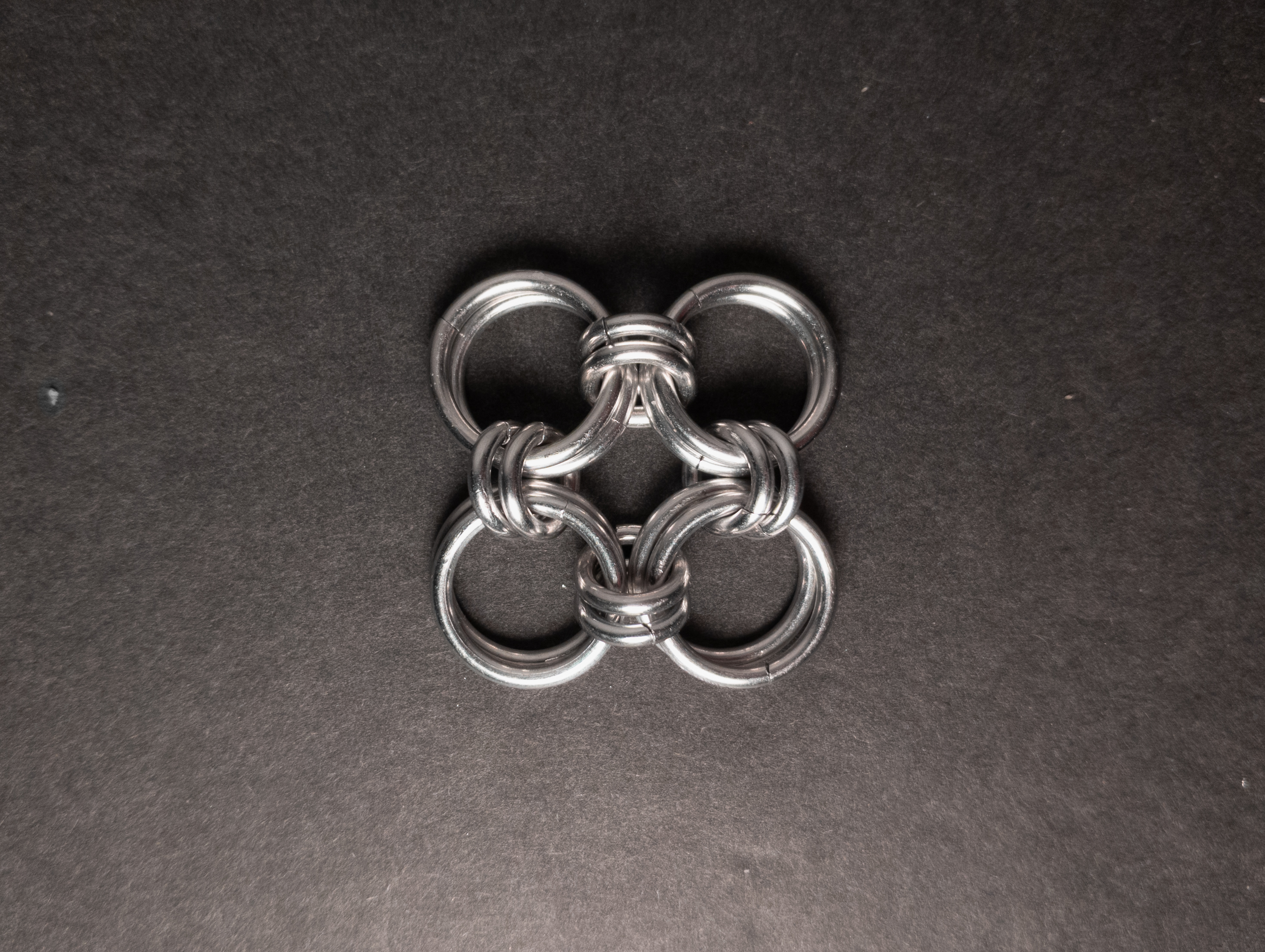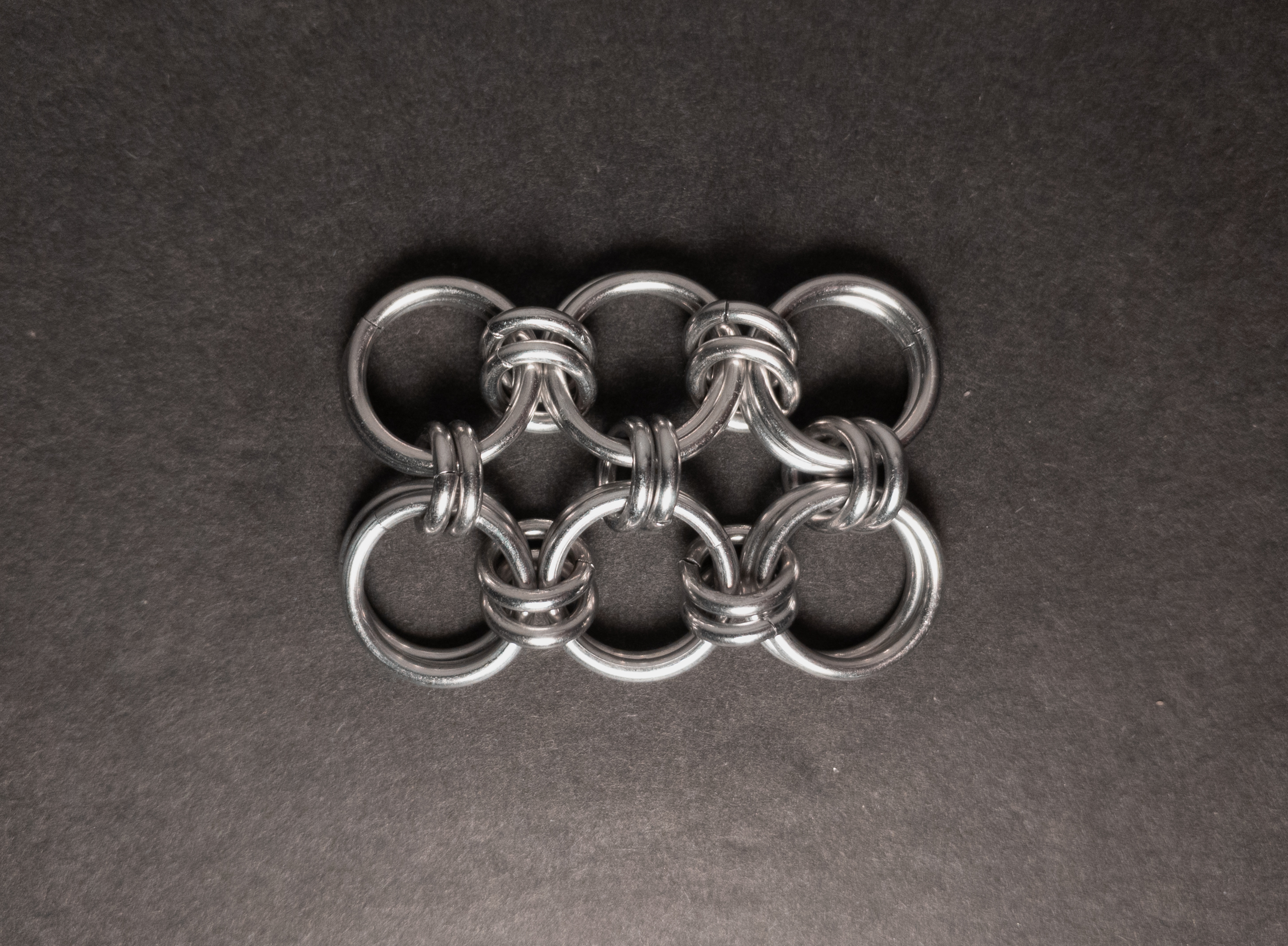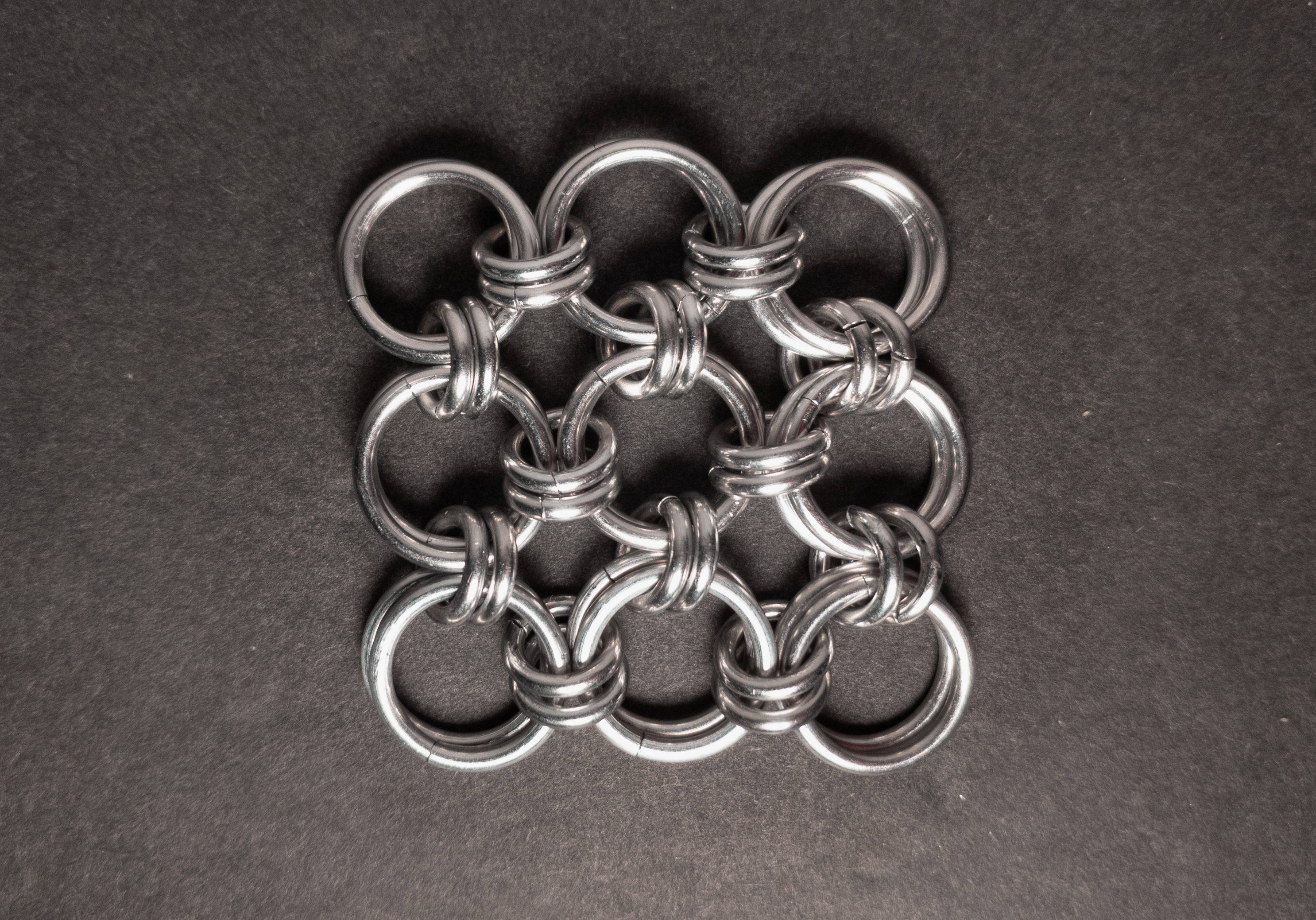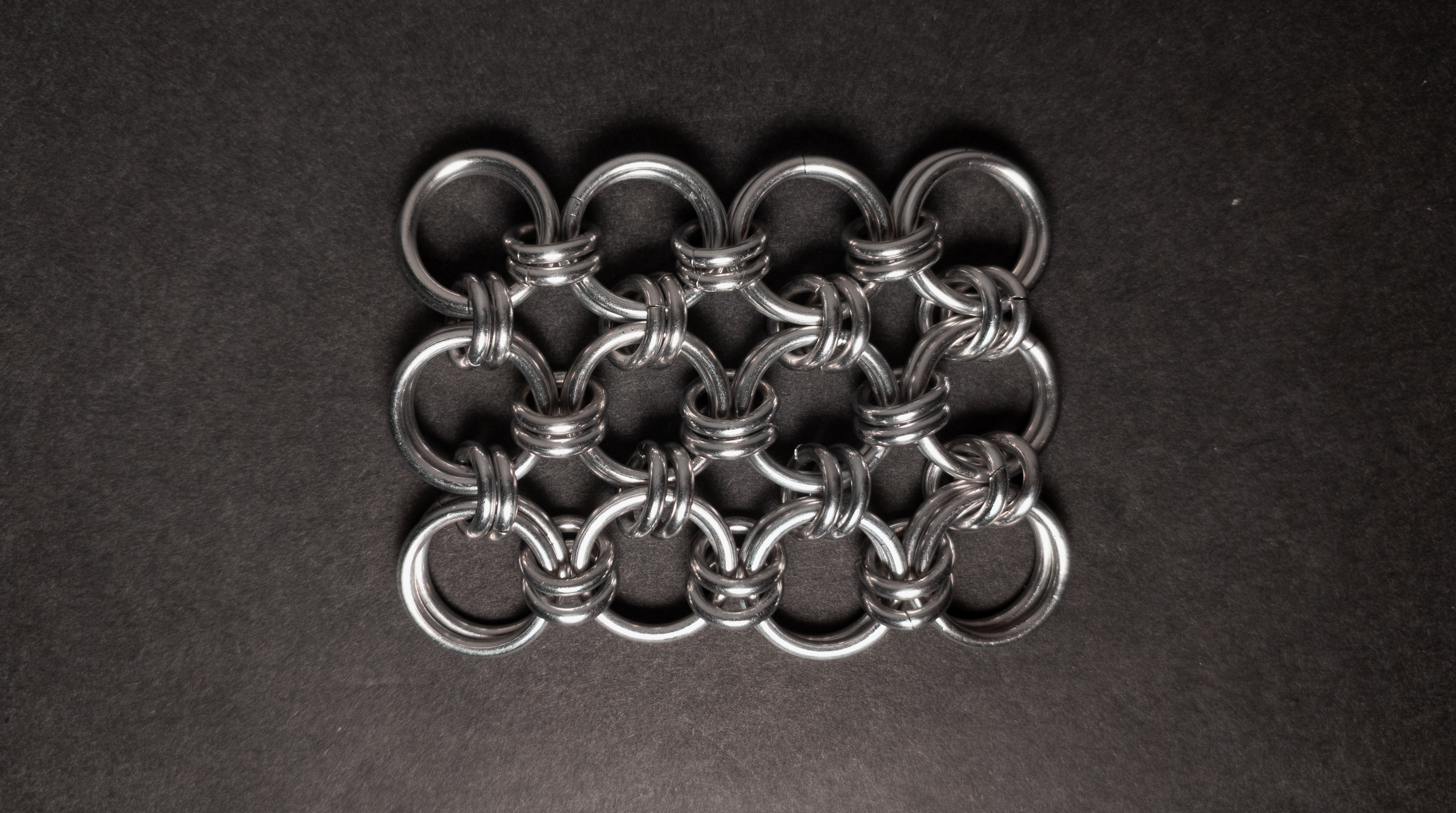posted: 2024-06-02
Japanese 8-in-2
Overview
After making Japanese 4-in-1, I wanted to try making more weaves in the Japanese family. While looking for those weaves on M.A.I.L., I found documentation of the historic Japanese 8-in-2 weave. Japanese 8-in-2 is a simple progression from Japanese 4-in-1 created by doubling each ring, vastly increasing the stability of the weave. Unfortunately, I could not find any tutorials, so I have written the included tutorial.
Materials
For the sample piece showcased in this post, I used two sizes of rings made by hand(bonus post coming soon) from 16 SWG Bright Aluminum wire purchased from The Ring Lord. The smaller rings have an ID(Inner Diameter) of 5mm for an AR(Aspect Ratio) of 3.1. The larger rings have an ID of 10mm for an AR of 6.15.
Tutorial
-
Start with 2 large rings stacked on each other as shown below.

-
Pick a direction to expand in and place 2 more large rings(green in the image below) stacked on top of each other in that direction. When done, it should look something like this:

-
Join the stacks of large rings from step 1 and step 2 using 2 small rings(green in the image below). When done, it should look something like this:

-
Pick a direction to expand the weave and place stacks of 2 large rings(green in the image below) in front of each pair of large rings on that side of the weave. When done, it should look something like this:

-
Join each pair of rings on the edge of the weave to the stacks of large rings placed in front of them in step 4 using 2 small rings(green in the image below). When done, it should look something like this:

-
Join each pair of large rings from step 4 to the pair next to it using 2 small rings(green in the image below). When done, it should look something like this:

-
Keep following steps 4 through 6 to expand your sheet, stopping when you are happy with the size.
Notes
The Japanese 8-in-2 weave stands out for its simplicity in understanding and creation. Its appearance is quite appealing, and as a sheet weave, it offers remarkable flexibility, making it suitable for various fabric-like applications. While not mandatory, using two sizes of rings enhances structural clarity and stability, especially when the vertical/joining rings are sufficiently small. In fact, when crafted with small enough rings, it can even serve structural purposes and be used in sculptures. Overall, I highly recommend mastering this weave due to its ease of learning and creation, aesthetic appeal, and versatility.
Pictures
Flat
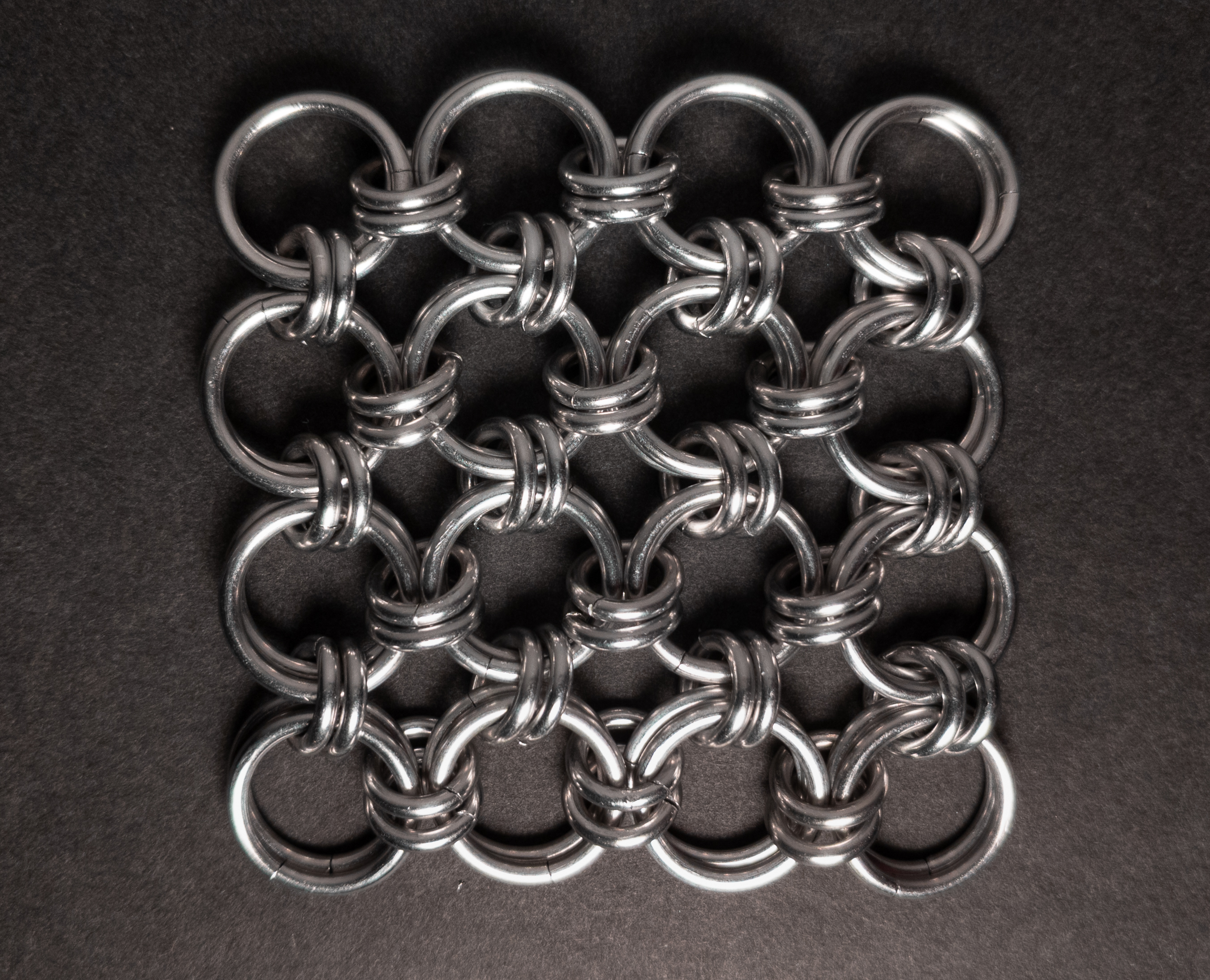
Flat: Profile

Vertical
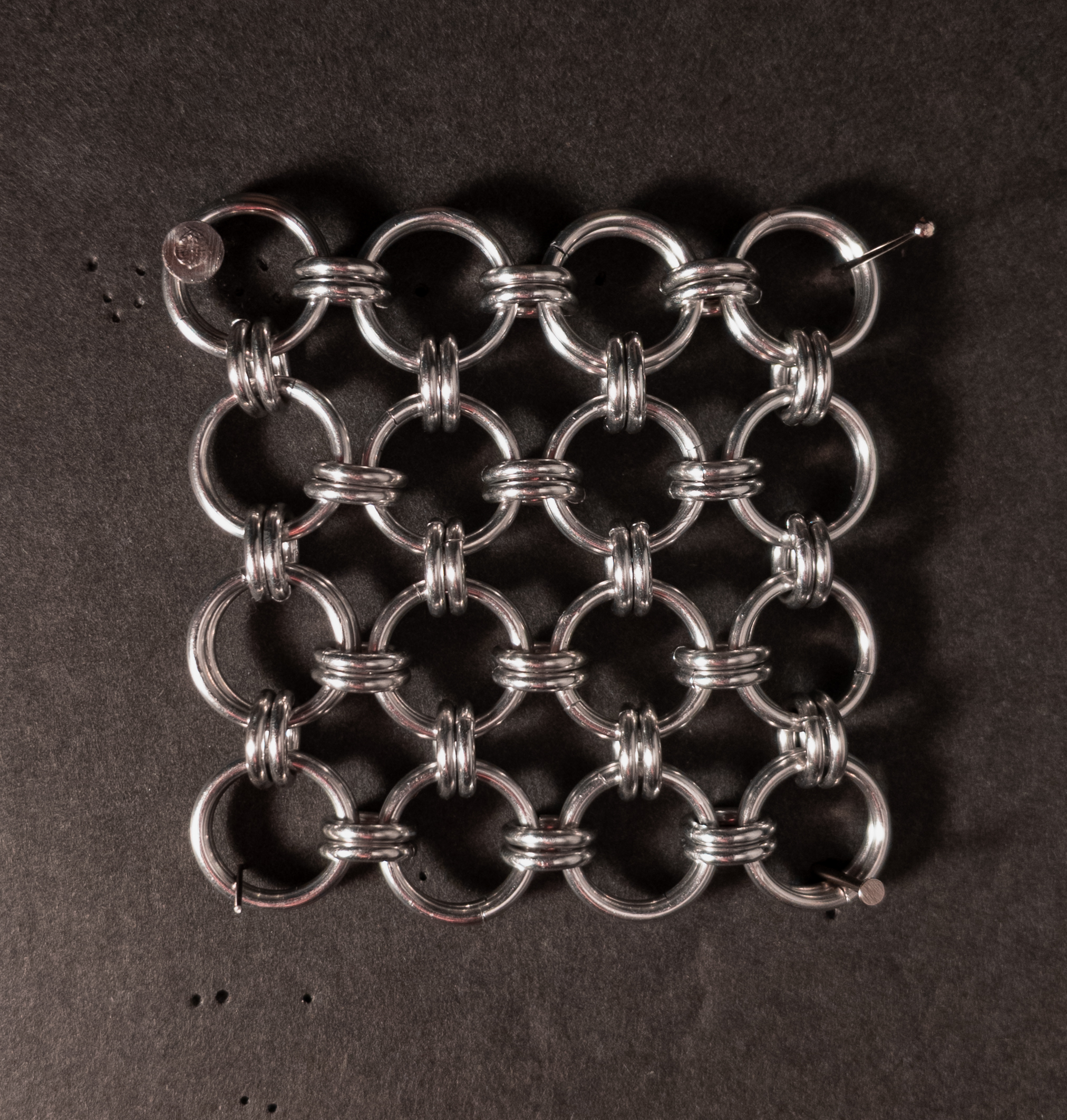
Vertical: Profile

In Process
